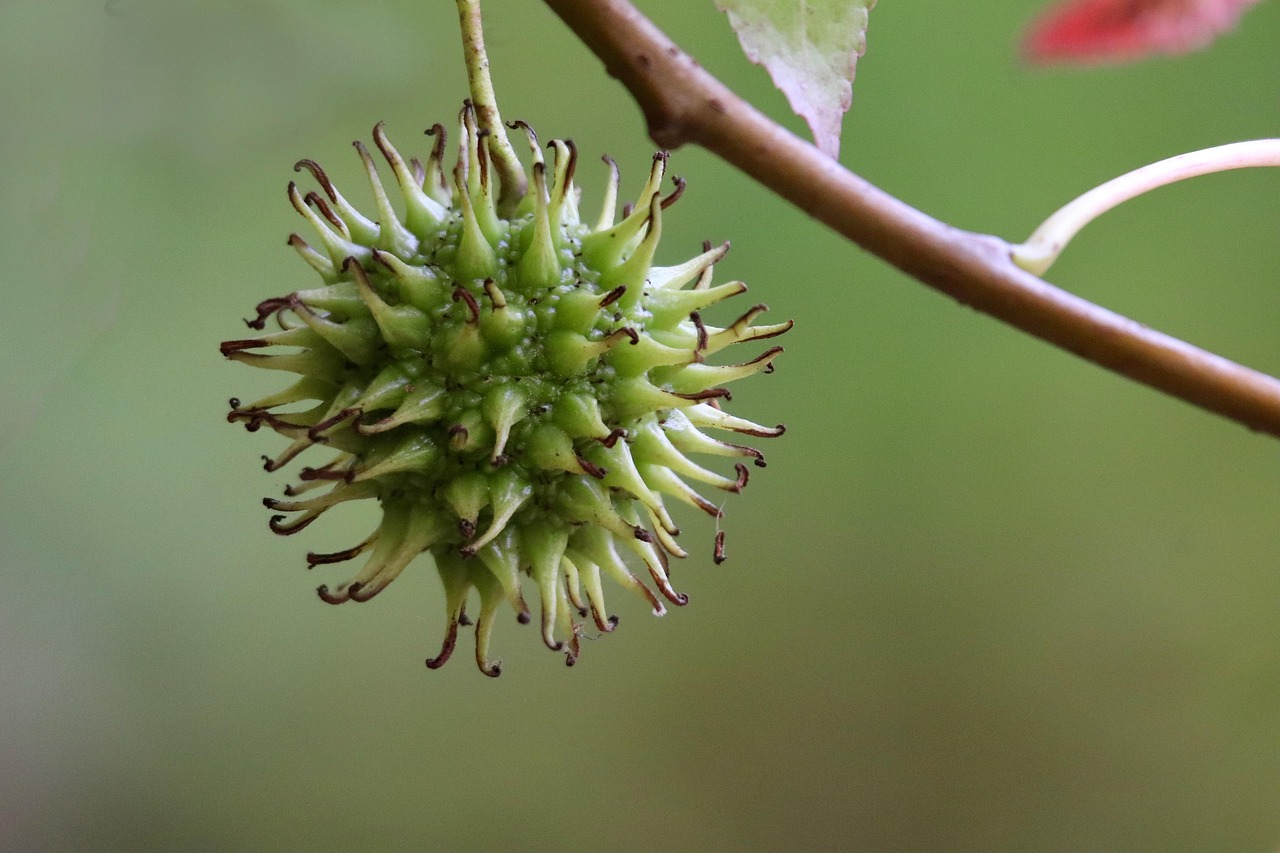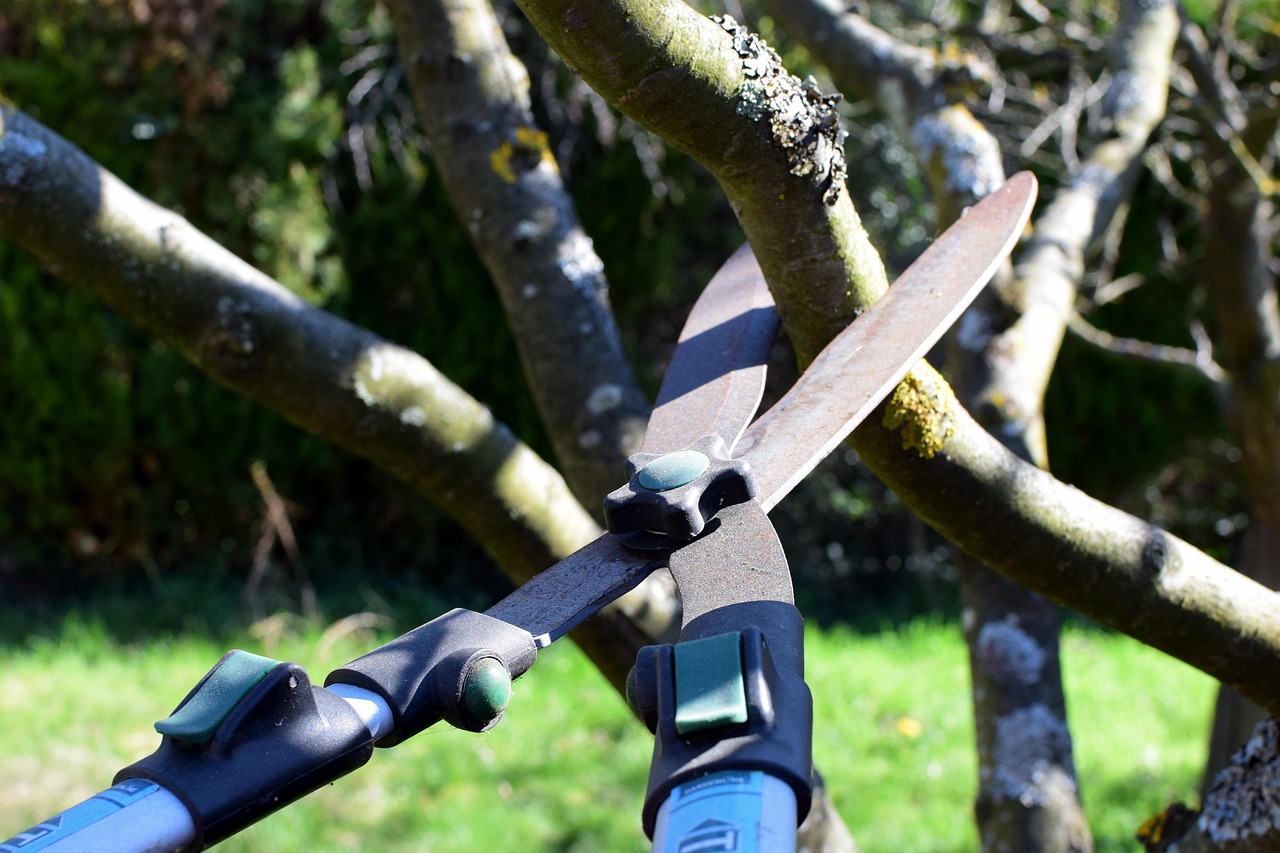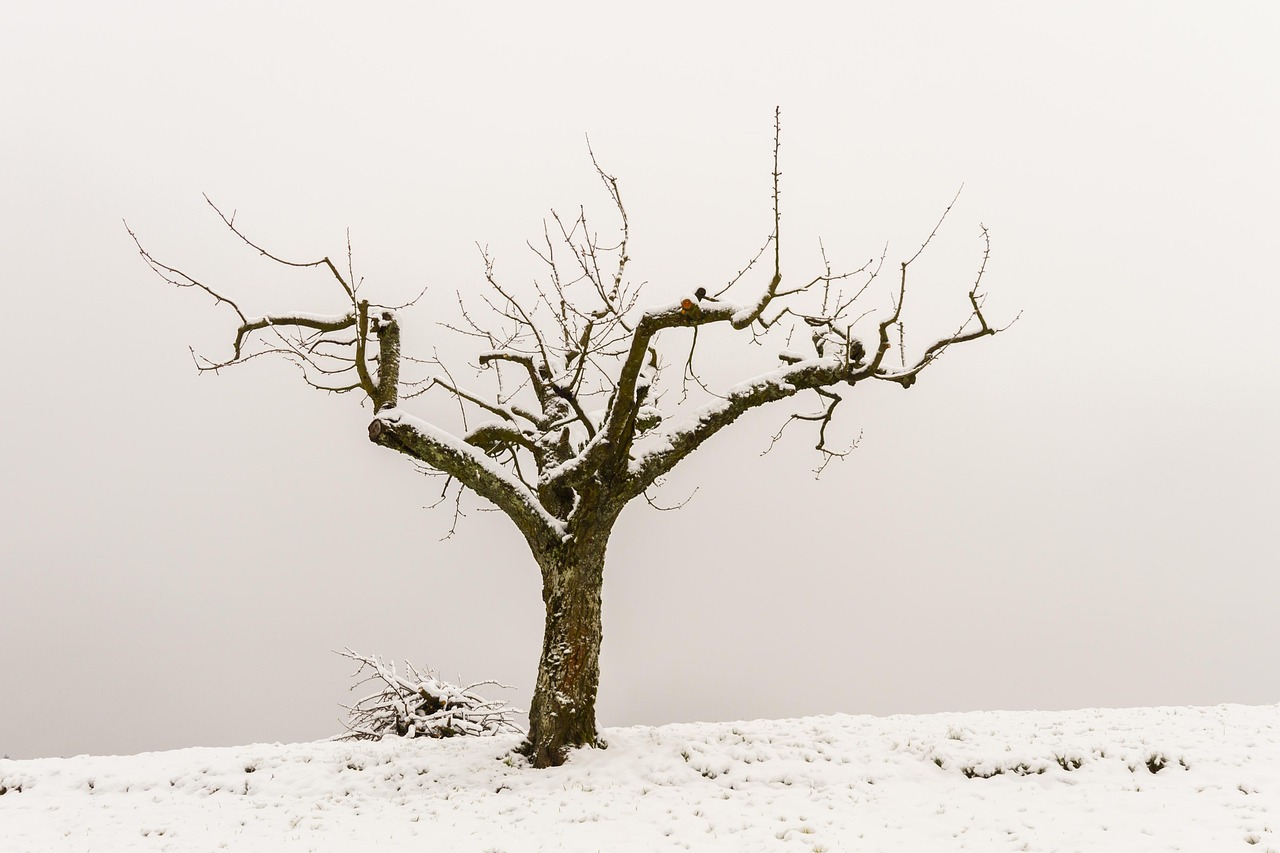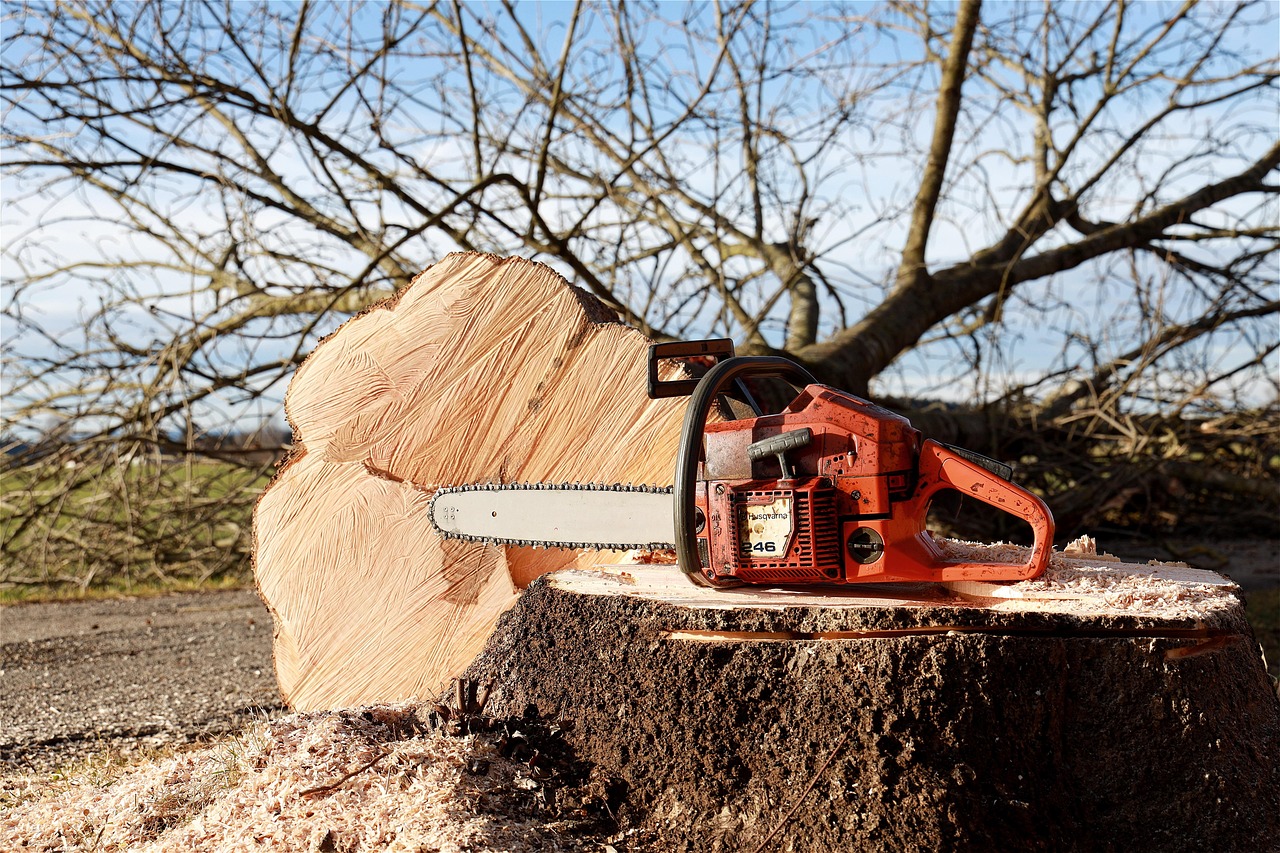Seasonal fruit tree pruning in cold climates is essential for promoting healthy growth and maximizing fruit yield. Pruning during dormancy, typically in late winter or early spring, helps shape trees, remove dead wood, and improve air circulation.
Fruit trees require specific care to thrive in cold climates. The harsh winters can stress trees, making proper pruning vital. In addition to enhancing aesthetics, pruning plays a crucial role in the health and productivity of fruit trees. It encourages better light penetration and air circulation, which helps prevent disease and promotes fruit set.

Understanding the best times to prune and the techniques involved is essential. The dormant season is generally the best time to prune most fruit trees. This period occurs when trees are not actively growing, allowing them to heal quickly after cuts. Pruning during dormancy reduces the risk of damage from cold temperatures and promotes vigorous growth in the spring.
Benefits of Pruning in Cold Climates
Pruning offers numerous advantages to fruit trees, especially in cold climates. Some of the key benefits include:
- Improved Air Circulation: Removing excess branches allows air to flow freely through the tree, reducing the risk of fungal diseases.
- Better Sunlight Exposure: Pruning helps ensure that sunlight reaches all parts of the tree, which is crucial for photosynthesis and fruit development.
- Encouragement of New Growth: By cutting back older branches, you encourage new growth that can produce more fruitful yields.
- Shape and Structure Maintenance: Regular pruning helps maintain an appropriate shape and structure, making it easier to harvest fruit.
Some common fruit trees grown in cold climates include apples, pears, cherries, and plums. Each type of tree has its own specific pruning requirements. Understanding these differences is essential for effective care.

| Fruit Tree | Best Pruning Time | Key Pruning Techniques |
|---|---|---|
| Apple | Late winter to early spring | Crown thinning, heading cuts |
| Pear | Late winter to early spring | Crown thinning, summer pruning |
| Cherry | Late winter | Light thinning, shaping |
| Plum | Late winter to early spring | Crown thinning, removing suckers |
The timing of pruning is particularly critical in cold climates. Pruning too early exposes trees to potential frost damage. Conversely, pruning too late may result in excessive sap loss or poor wound healing. Therefore, monitoring local weather patterns can help determine the best time for pruning.
Essential Tools for Pruning
Having the right tools is essential for effective pruning. The following tools are commonly used:
- Pruning Shears: Ideal for cutting small branches and twigs with precision.
- Loppers: Useful for reaching higher branches and cutting thicker limbs.
- Saws: A small pruning saw is necessary for larger branches that require more force.
- Gloves: Protect hands while working with sharp tools and rough branches.
- Ladder: Essential for reaching taller trees safely.
Before starting the pruning process, ensure that all tools are clean and sharp. Sharp tools make cleaner cuts, which help trees heal faster. Cleaning tools between cuts can prevent the spread of disease among trees.

Pruning Techniques for Cold Climate Trees
When pruning fruit trees in cold climates, several techniques can be employed. These techniques help shape the tree while promoting healthy growth:
- Crown Thinning: Involves selectively removing branches to increase light penetration and air circulation.
- Crown Raising: This technique removes lower branches to allow more space for growth underneath the tree.
- Crown Reduction: Reduces the height or spread of a tree by cutting back larger branches.
- Heading Cuts: Shortens a branch to promote bushier growth; this is often used on young trees.
Each of these techniques can be adapted based on the specific needs of the tree species and local climate conditions. Understanding when and how to apply these techniques will lead to healthier fruit trees and better yields over time.
Timing Your Pruning
Timing is critical when it comes to pruning fruit trees in cold climates. The right timing can significantly affect the health and productivity of the trees. Understanding the various stages of the tree’s growth cycle helps ensure effective pruning.

Late Winter Pruning
Pruning during late winter, just before the trees begin to bud, is often recommended for most deciduous fruit trees. This timing allows for:
- Reduced Stress: Trees are still dormant, minimizing stress from pruning.
- Better Visibility: Without leaves, it is easier to see the tree structure and identify branches to prune.
- Faster Healing: Cuts made during this time will heal quickly as trees start to grow in spring.
Spring Pruning
Spring pruning, while less common, can be beneficial for certain trees. Some advantages include:
- Immediate Growth Observation: You can see new growth and determine which branches are dead or diseased.
- Enhanced Decision Making: Pruning in spring allows you to make adjustments based on the current health of the tree.
- Less Risk of Frost Damage: In some areas, late frosts may damage trees that have been pruned too early.
However, spring pruning should be done carefully to avoid excessive sap loss, particularly in certain tree species like maples.
Understanding Tree Growth Cycles
To effectively prune your fruit trees, understanding their growth cycles is essential. Different types of trees have unique growth patterns that influence when and how they should be pruned.
Deciduous Trees
Deciduous fruit trees, such as apples and pears, typically go through a cycle of dormancy and active growth:
- Winter Dormancy: Trees conserve energy and nutrients.
- Spring Growth: Buds open, and new leaves and flowers begin to form.
- Summer Development: Fruits grow and ripen while leaves support photosynthesis.
- Fall Preparation: Trees prepare for winter by storing nutrients.
Pruning during the winter dormancy phase allows for maximum growth potential in the spring.
Everbearing Trees
Everbearing fruit trees, such as certain varieties of figs, have different growth cycles. These trees may produce fruit throughout the growing season. Therefore, pruning must be carefully timed to avoid cutting off developing fruit. For these trees, consider:
- Selective Pruning: Focus on removing dead or damaged branches without affecting new growth.
- Summer Pruning: Some gardeners prefer light summer pruning to manage growth while leaving fruit intact.
Pests and Diseases Management
Pests and diseases pose a significant threat to fruit trees, especially in cold climates where conditions can be harsh. Pruning serves as a critical management tool for maintaining tree health.
Pest Control Through Pruning
Pruning can help control pest populations by reducing the density of branches, which makes it harder for pests to thrive. Effective techniques include:
- Removing Infected Wood: Cut away any branches that show signs of disease or pest infestation.
- Avoiding Dense Canopies: Thin out crowded branches to allow sunlight penetration and air circulation.
Disease Prevention Strategies
In addition to pruning, several strategies can help reduce disease risk:
- Cleansing Tools: Always disinfect pruning tools before use to prevent spreading diseases between trees.
- Proper Wound Care: Use wound sealant if necessary on larger cuts to protect against pathogens.
- Select Resistant Varieties: Choose fruit tree varieties known for their resilience against local diseases.
| Disease/Pest | Signs | Pruning Action |
|---|---|---|
| Coddling Moth | Fruit damage, entry holes | Remove damaged fruits and infested branches |
| Powdery Mildew | White powdery spots on leaves | Thin leaves to improve air circulation |
| Fire Blight | Browning or wilting blossoms | Cut back infected branches well below the infection point |
| Aphids | Shriveled leaves, sticky residue | Remove heavily infested shoots |
By implementing these strategies, you can increase the resilience of your fruit trees against pests and diseases during the cold months. Proper seasonal pruning is not just about aesthetics; it plays a fundamental role in ensuring healthy growth and a bountiful harvest.
Common Mistakes in Pruning
Pruning fruit trees can be a rewarding task, but it comes with its share of challenges. Many gardeners make mistakes that can hinder the health and productivity of their trees. Understanding these common errors is essential for successful pruning.
Pruning at the Wrong Time
One of the most significant mistakes is pruning at the wrong time. In cold climates, this can lead to:
- Frost Damage: Pruning too early in the winter can expose sensitive tissues to frost, causing damage.
- Excessive Sap Loss: Late spring pruning may result in excessive sap loss, which can stress the tree.
- Pest Attraction: Incorrect timing may encourage pests to infest newly pruned trees.
Over-Pruning
Another common error is over-pruning, which can severely affect tree health. Signs of over-pruning include:
- Weak Growth: Trees may struggle to grow due to excessive leaf removal.
- Fruit Production Decline: Over-pruned trees may produce fewer fruits the following season.
- Increased Stress: Trees can become stressed and more susceptible to diseases and pests.
Improper Cutting Techniques
The technique used during pruning is crucial. Improper cuts can lead to long-term damage. Common issues include:
- Bark Damage: Cuts made too close to the trunk or too far from the bud can cause bark tearing.
- Angle of Cuts: Cuts that are not angled correctly may lead to water pooling, increasing the risk of rot.
- Lack of Clean Cuts: Jagged cuts heal slower and may invite disease.
Pruning Different Types of Fruit Trees
Different fruit trees have unique requirements when it comes to pruning. Knowing how to approach each type will help ensure their health and productivity.
Apple Trees
Apple trees benefit from a specific pruning approach due to their growth patterns. Key techniques include:
- Thinning Cuts: Remove crowded branches to promote better air circulation and light exposure.
- Heading Cuts: Shorten branches to encourage bushier growth and more fruiting spurs.
Pear Trees
Pear trees have similar needs as apple trees but require careful handling due to their delicate nature. Consider the following:
- Avoid Heavy Pruning: Pear trees should not be heavily pruned, as this can lead to excessive water shoot growth.
- Focus on Structure: Maintain a strong central leader while removing weak branches.
Cherry Trees
Cherry trees need a distinctive approach due to their susceptibility to diseases. Effective methods include:
- Summer Pruning: Consider light summer pruning to control growth while reducing disease risk.
- Remove Deadwood: Regularly remove any dead or diseased branches to maintain tree health.
Plum Trees
Plum trees require special attention as well. Here are some essential tips:
- Winter Pruning: Focus on winter pruning for maximum health benefits and fruit production.
- Sucker Removal: Remove suckers that grow at the base of the tree to direct energy towards fruit production.
The Role of Fertilization After Pruning
After pruning, proper fertilization is crucial for promoting healthy growth in fruit trees. Fertilization supports recovery and new growth. Here are some key points to consider:
Selecting the Right Fertilizer
Choosing a suitable fertilizer is essential for fruit trees after pruning. Look for fertilizers that contain:
- Nitrogen: Promotes leafy growth and helps trees recover from pruning stress.
- Phosphorus: Supports root development and flowering, which are crucial for fruit production.
- Potassium: Enhances overall tree vigor and improves fruit quality.
Timing of Fertilization
The timing of fertilization is as important as the choice of fertilizer. Consider fertilizing:
- Early Spring: Apply fertilizer as growth begins to ensure that nutrients are available for new shoots.
- Post-Pruning: Fertilizing immediately after pruning can help trees recover more quickly from stress.
The Importance of Mulching
Mulching around the base of fruit trees provides numerous benefits that contribute to their overall health and productivity. Some key advantages include:
- Disease Prevention: Mulch helps prevent soil-borne diseases from splashing onto lower branches during rain.
- Moisture Retention: A layer of mulch helps conserve soil moisture, reducing the need for frequent watering.
- Weed Suppression: Mulch prevents weeds from competing with fruit trees for nutrients and water.
Adequate mulching practices not only enhance tree health but also create a more manageable growing environment in cold climates. Proper care and maintenance through techniques like mulching, fertilization, and understanding tree types will result in thriving fruit trees even in challenging weather conditions.
Additional Considerations for Successful Pruning
Aside from the techniques and practices already discussed, there are several additional considerations that can enhance the success of fruit tree pruning in cold climates. These factors can further improve tree health and maximize fruit production.
Understanding Local Climate Trends
Local climate trends play a significant role in determining the best practices for pruning fruit trees. It is essential to be aware of:
- Frost Dates: Knowing the average last frost date in your region helps in planning the timing of your pruning.
- Winter Severity: Colder winters may necessitate different pruning techniques to protect trees from extreme cold damage.
- Rainfall Patterns: Understanding rainfall can help determine the need for additional irrigation or mulch to retain moisture.
Soil Health and pH Levels
The health of the soil where your fruit trees are planted directly influences their growth and productivity. Regular soil testing is recommended to check:
- Nutrient Levels: Ensure that the soil has adequate levels of nitrogen, phosphorus, potassium, and other essential nutrients.
- pH Levels: Most fruit trees thrive in slightly acidic to neutral soil (pH 6.0 to 7.0). Adjusting pH can improve nutrient availability.
Incorporating organic matter such as compost can enhance soil health, providing beneficial microorganisms that support tree growth.
Watering Practices
Proper watering is crucial, especially after pruning. When trees experience stress from pruning, they require sufficient water to recover:
- Consistent Moisture: Ensure that soil remains consistently moist but not waterlogged, particularly during the growing season.
- Deep Watering: Water deeply to encourage root growth, rather than frequent shallow watering.
Pest and Disease Monitoring After Pruning
After pruning, it is essential to monitor fruit trees for signs of pests and diseases. Regular inspections should focus on:
- Leaf Health: Check for discoloration, wilting, or spots that may indicate disease.
- Branch Integrity: Look for signs of pests such as holes or frass (insect droppings) on branches.
- Fruit Development: Monitor developing fruits for any abnormalities that may arise due to pest infestations or diseases.
Early detection and intervention are key to preventing larger issues that can affect tree health and productivity.
Final Thoughts
Seasonal fruit tree pruning in cold climates requires a careful balance of techniques, timing, and ongoing care. By understanding the specific needs of different fruit trees, utilizing appropriate pruning techniques, and implementing additional practices such as mulching and fertilization, you can significantly enhance the health and productivity of your trees.
The importance of timing cannot be overstated. Pruning at the right moment helps trees recover from stress and set the stage for a successful growing season. Additionally, being mindful of local climate trends, soil health, and pest management strategies will contribute to thriving fruit trees capable of withstanding the challenges posed by cold climates.
With patience and attention to detail, successful pruning can lead to bountiful harvests year after year. Through proper care and management, your fruit trees can flourish, providing delicious fruits while enhancing your garden’s beauty and biodiversity.
